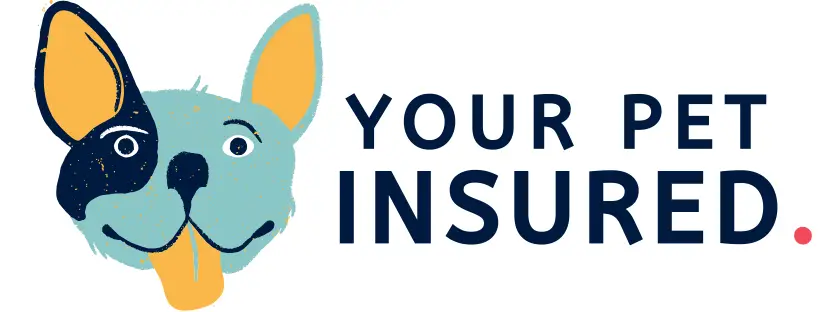Scabs on Dogs’ Back
Seeing scabs on your dog’s back can be concerning as a dog owner. Scabs can indicate a skin problem, and it is essential to address it before it worsens. In this article, we will explore what crusty scabs are on a dog’s back, common areas where dog scabs appear, types of scabs on dogs, causes for those scabs, how to prevent scabs on your dog’s skin, how to treat scabs on your dog’s back, and home remedies for scabs on your dog’s back.
What are crusty scabs on a dog’s back?
Crusty scabs on a dog’s back are patches of dry, rough, and hard skin that form crusts. These dry patches can be of different shapes and sizes and vary in colour. These scabs can be uncomfortable for your dog and cause pain and itchiness.
Common areas where dog scabs appear
Dog scabs can appear on any part of their body, but they are most common in areas exposed to the environment, such as the back, your dog’s ears, and legs. Some common areas where scabs can appear on the back include the base of the tail, the shoulder blades, and the lower back.
Types of scabs on dogs
Different types of scabs can form on a dog’s back, and each type typically has another root cause. Some of the most common types of scabs on dogs include:
- Flea bite: These scabs are caused by flea bites, leading to intense itching and skin irritation.
- Hot spots: These are moist, red, and painful patches on a dog’s skin that can be caused by bacterial infections or allergies
- Allergic dermatitis: This is an allergic reaction that can cause red, itchy, and inflamed skin, leading to the formation of scabs.
- Ringworm: This fungal infection can cause scaly and crusty patches on a dog’s skin, leading to scab formation.
Causes of crusty scabs on your dog
Scabs on a dog’s back can have various causes. It is essential to identify the cause of your dog’s scab so the problem can be addressed correctly and to ensure the right care can be gotten for your dog. Some of the most common causes of crusty scabs on your dog include:
- Parasites: Fleas, ticks, and mites can cause skin irritation, itching, and scab formation on a dog’s back.
- Allergies: Dogs can be allergic to various foods, environmental factors, or insect bites, which can cause scabs and other skin problems.
- Infections: Bacterial, fungal, and viral infections can cause scabs on your dog’s back.
- Nutritional deficiencies: A bad diet lacking essential nutrients can lead to skin problems and scab formation in dogs.
- Trauma: Injuries, scratches, and bites can cause scabs to form.
How to prevent scabs on your dog’s skin?
Preventing scabs on your dog’s skin can be done through regular grooming. This includes bathing your dog with a gentle shampoo. Overbathing your dog can be counterproductive as it strips the natural oils from their skin. This can, cause dryness, which could also lead to scabbing. It’s best to find the right balance here.
In addition to grooming, proper nutrition is essential for preventing scabs on your dog’s skin. Feeding your dog a balanced and nutritious diet can help maintain the health of their skin and coat.
It’s also important to keep your dog away from potential allergens that can cause skin irritation, such as certain garden plants that are toxic to dogs, chemicals, and other irritants.
How to treat scabs on your dog’s back?
| Underlying Cause | Treatment |
| Fleas or other parasites | Flea and tick medication |
| Infection | Antibiotics or other medications |
| Skin condition (e.g. hot spots) | Clean the affected area and apply topical ointment or cream |
| Severe cases | Corticosteroids or immunosuppressive drugs (under veterinarian recommendation) |
Home remedies for scabs on dogs’ back
| Home Remedies | Recommended Use |
| Cool, damp compress | To soothe the affected area |
| Aloe vera gel or coconut oil | To moisturize and soothe the skin |
| Apple cider vinegar | To promote healthy skin and coat |
| Omega-3 fatty acid supplements (fish oil or flaxseed oil) | To promote healthy skin and coat |
| Foods high in omega-3 fatty acids (e.g., salmon or sardines) | To promote healthy skin and coat |
| Adequate rest and exercise | To promote overall health and aid in healing |
Conclusion
In conclusion, scabs on a dog’s back can indicate various underlying issues, including parasites, infections, allergies, and skin conditions. Proper grooming, nutrition, and veterinary care can help prevent and treat scabs on your dog’s skin. If you notice scabs on your dog’s back, seeking veterinary treatment as soon as possible is important to determine the underlying cause.
What the experts say
Expert quote:
“If you notice scabs on your dog’s back, it’s important to have them examined by a veterinarian. Scabs can be a sign of various underlying conditions, and prompt treatment can prevent further discomfort for your furry friend.” – Dr. Kellie Talbot, DVM
FAQs for Scabs on Dogs’ Backs
Scabs on a dog’s back can indicate a more serious health issue, such as an infection or autoimmune disease.
Scabs on a dog’s back are not typically contagious to other dogs or humans unless the underlying cause is a contagious skin infection, so there is usually nothing to worry about.
The healing time for scabs on a dog’s back depends on their underlying cause and severity, but it typically takes several days to a few weeks for them to heal.
It is generally safe to treat minor scabs on a dog’s back at home, but if the scabs are severe, infected, or accompanied by other symptoms, it is best to consult a veterinarian.
Yes, diet can play a role in developing scabs on a dog’s back, particularly if the dog is allergic to certain ingredients in their food.
Yes, certain breeds, such as Labrador Retrievers and German Shepherds, are more prone to developing scabs on their backs due to their genetics and coat type.
Scabs on a dog’s back can indicate a food allergy or other allergies, as they can cause skin irritation and itching.
Regular grooming and bathing can help prevent scabs on a dog’s back by keeping their skin clean and free of dirt, debris, and parasites.
Several over-the-counter products, such as medicated shampoos and sprays, can treat scabs on a dog’s back. However, reading the label and following the instructions is important.
Yes, scabs on a dog’s back can lead to hair loss or other skin problems if left untreated, as they can become infected and cause further skin irritation and damage.


